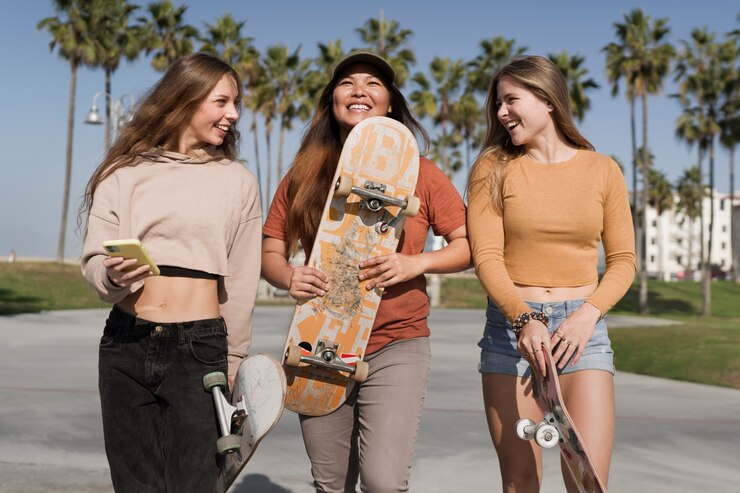Fashion is more than just clothes; it’s a reflection of culture, a canvas for self-expression, and a constant conversation starter. But have you ever wondered where those trendy outfits or must-have accessories originate? Look no further than the ever-evolving world of pop culture. The influence of pop culture on fashion is undeniable, shaping trends, inspiring designers, and dictating what’s hot on the streets.
A Match Made in Trendsetting Heaven: Why Pop Culture and Fashion Click
The influence of pop culture on fashion thrives on a powerful synergy. Here’s why these two forces work so well together:
Cultural Relevance: Pop culture reflects the current social zeitgeist, capturing popular interests, movements, and trends. Fashion designers tap into this zeitgeist, translating it into wearable styles that resonate with consumers.
Celebrity Power: Celebrities are modern-day style icons. Their red carpet looks, music video outfits, and everyday street style are plastered all over social media, influencing millions of fans.
Nostalgia Factor: Pop culture trends often have a cyclical nature. Fashion designers revisit iconic looks from past eras, reimagining them for a contemporary audience. This nostalgia factor fuels trends and sparks a renewed interest in vintage styles.
From the Big Screen to Your Wardrobe: Iconic Pop Culture Moments that Defined Fashion
The influence of pop culture on fashion has a rich history. Here are some unforgettable moments that left a lasting mark:
The Roaring Twenties: Flappers epitomized the liberation of the Jazz Age, sporting short fringed dresses, cloche hats, and beaded accessories. This era’s fashion continues to inspire designers and vintage enthusiasts today.
Greaser Style: The 1950s film “Rebel Without a Cause” popularized the “greaser” look, featuring leather jackets, jeans, and white t-shirts. This rebellious style continues to be a cool-guy staple.
The Mini Skirt Revolution: The iconic mini skirt, championed by Mary Quant in the 1960s, symbolized a shift towards women’s liberation and body confidence. This shorter, sleeker silhouette became a fashion mainstay.
Punk Rock Rebellion: The punk movement of the 1970s rejected mainstream fashion. Ripped clothing, safety pins, and androgynous silhouettes challenged societal norms and continue to inspire edgy fashion statements.
The Rise of Athleisure: Pop culture’s obsession with fitness and celebrities rocking sporty looks in the 2000s led to the rise of athleisure. Now, comfortable and stylish athletic wear is a major fashion trend.
The Numbers Don’t Lie: The Economic Impact of Pop Culture on Fashion
The influence of pop culture on fashion isn’t just cultural; it’s economic as well. Here’s a glimpse of the impact:
| Pop Culture Phenomenon | Estimated Economic Impact on Fashion Industry |
| Popular TV Show Costume | A single character’s signature look can generate millions in sales of similar clothing items. |
| Celebrity Endorsement Deal | A celebrity’s association with a clothing brand can significantly boost sales and brand awareness. |
| Merchandise Sales | Movies, TV shows, and music artists generate significant revenue through branded clothing and merchandise. |
Beyond the Runway: How Social Media Fuels the Pop Culture-Fashion Cycle
Social media has become a key player in the influence of pop culture on fashion. Here’s how:
Instant Trendsetting: Viral trends on platforms like TikTok and Instagram can spark overnight fashion crazes.
Micro-Influencers: Everyday celebrity fashion enthusiasts with large followings can influence their audience’s style choices.
Shoppable Content: Platforms like Instagram allow users to purchase items directly from influencer posts, blurring the lines between browsing and buying.
The Future of Fashion: Embracing Change and Personal Expression
The influence of pop culture on fashion is here to stay. As pop culture continues to evolve, so too will fashion trends. The key lies in embracing change, finding inspiration from various sources, and using fashion as a tool for personal expression. Here are some ideas to consider for the future:
Sustainable Fashion: The growing consciousness about sustainability will likely influence fashion towards more ethical and eco-friendly choices.
Diversity and Inclusivity: The fashion industry is moving towards greater inclusivity, reflecting the diversity of pop culture and society at large.
Tech-Driven Personalization: Technology might play a bigger role in fashion, with personalized recommendations and custom-designed clothing based on individual preferences and pop culture influences.
Conclusion
The influence of pop culture on fashion is profound and ever-evolving. Pop culture serves as a dynamic catalyst, shaping trends, inspiring creativity, and reflecting societal values through the lens of fashion. Celebrities, music, movies, and social media icons play pivotal roles in dictating what becomes fashionable, often leading to a rapid and widespread adoption of new styles. This symbiotic relationship not only drives the fashion industry forward but also allows individuals to express their identities and cultural affiliations through their clothing choices.







